The Davis Museum is closed for Wellesley College’s winter break. Please join us at our spring opening celebration on February 5, 2026, at 4 pm.
Martin Luther: A Reformer is Made
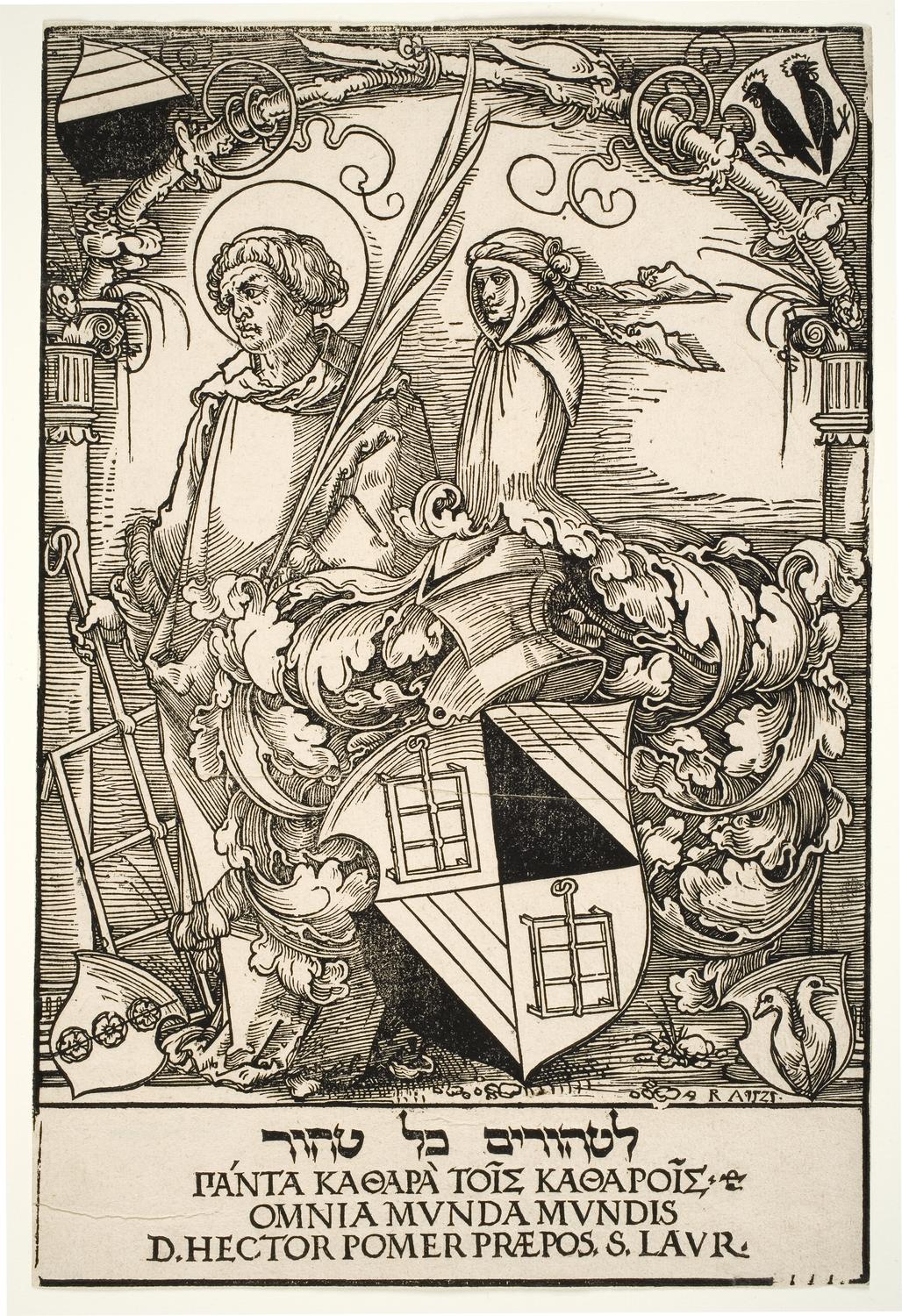
Hans Sebald Beham, The Coat of Arms of Hector Pomer, 16th century, Woodcut, Bequest of Dr. Ruth Boschwitz Benedict (Class of 1935) 1994.36
Born in the German town of Eisleben in 1483, Luther enrolled at the University of Erfurt in 1501. Against his father’s wishes, he ended his study of law there in order to become a monk in the Order of Saint Augustine and was soon thereafter ordained a priest. In 1508, he enrolled at the University of Wittenberg, and joined the faculty four years later as professor of theology. Around 1514 he also became a preacher in the Wittenberg parish church.
Notoriety came to Luther initially by way of controversy. Provoked in 1517 by the sale of indulgences—authorized by the pope most recently in several German territories, ostensibly to support the massive rebuilding of Saint Peter’s Basilica in Rome—Luther drew up a list of ninety-five theses objecting to the practice. Hoping to provoke academic debate, he circulated his objections to colleagues and Church superiors. Quickly printed and circulated in Latin and German, the Ninety-five Theses were followed by Luther’s Sermon on Indulgence and Grace, a German commentary that reached an even larger audience, going through more than twenty editions within two years. The wide circulation of these texts, and the Church’s responses to them, projected Luther onto an international stage and drew him into direct and public opposition to the papacy. As he and his allies clarified their theological positions, presses throughout Germany published hundreds of tracts in large numbers; these included portraits, as a means of granting authority to both the author and his texts. These portraits helped to shape and control Luther’s growing reputation as a powerful politician and thoughtful academic.
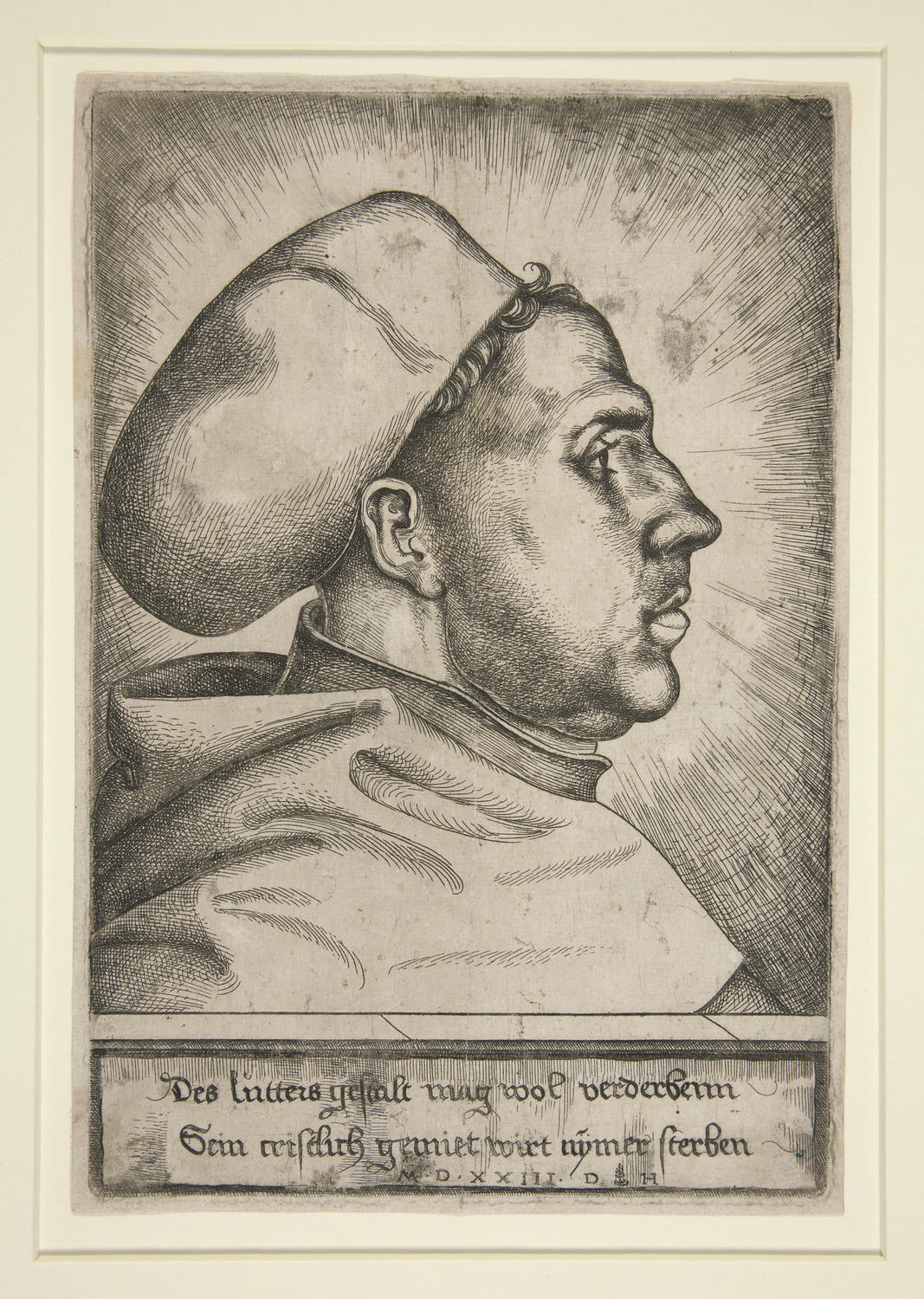
Daniel Hopfer the Elder (after Lucas Cranach the Elder), Martin Luther, 1523, Copper Engraving, Yale University Art Gallery, Gift of Edward B. Greene, B.A. 1900 1939.595
Hopfer’s engraved image reproduces a print of Martin Luther made by Lucas Cranach the Elder in 1521, of which very few examples remain. By representing Luther in a doctoral hat that hides his tonsure (the ringed haircut worn by monks, meant to evoke Christ’s crown of thorns), the image emphasizes his academic training and diminishes his monastic background. Cranach’s unusual choice to depict Luther in profile recalls portraits of early Renaissance princes, thus associating the Reformer with both political power and Humanist traditions. Throughout his life, Cranach created several portraits of Luther, reproduced throughout books of Luther’s writings.
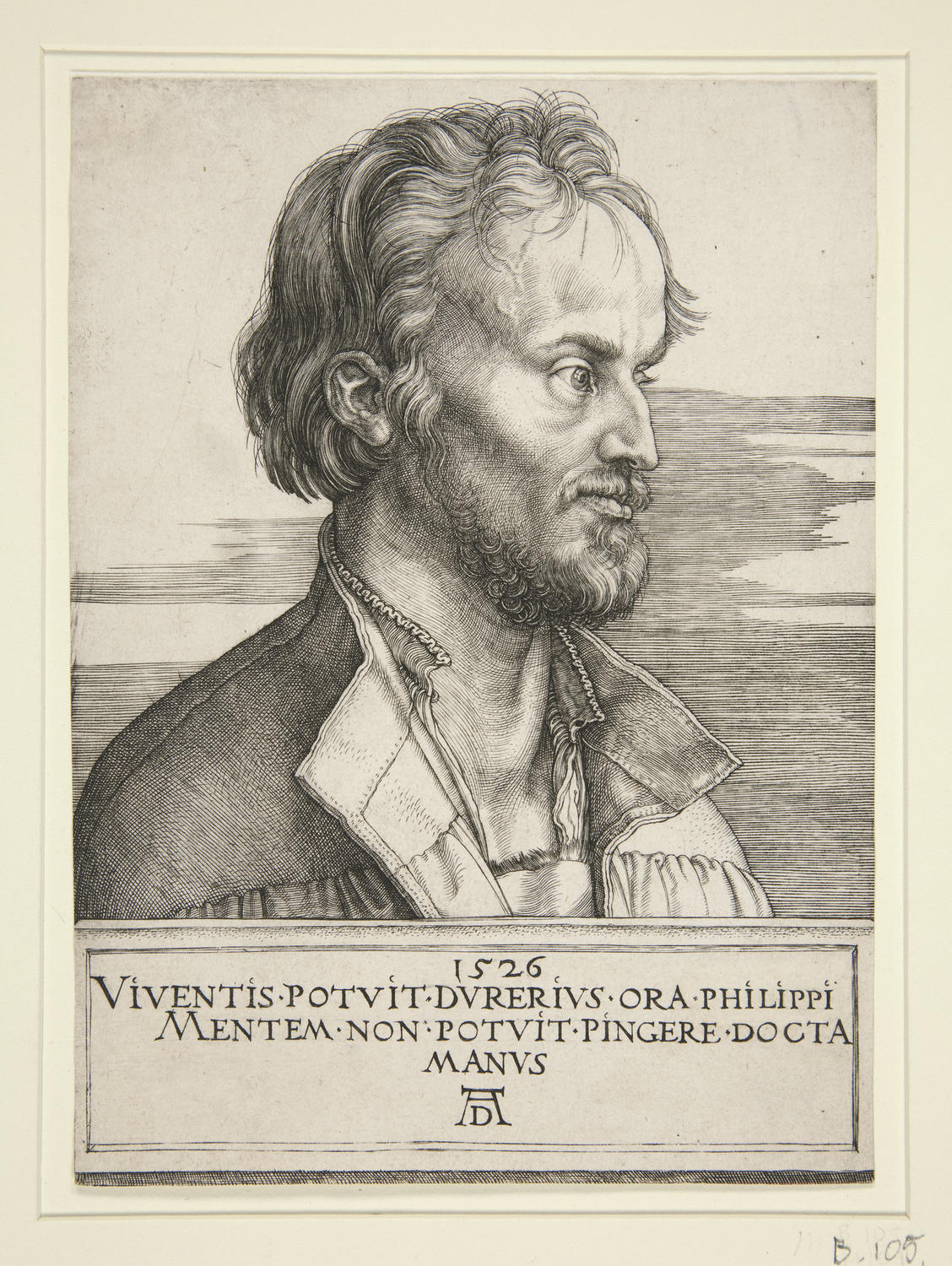
Albrecht Dürer, Philipp Melanchthon, 1526, Engraving, Yale University Art Gallery, Fritz Achelis Memorial Collection, Gift of Frederic George Achelis, B.A. 1907 1925.84
Professor of Greek at the University of Wittenberg and close colleague of Martin Luther, Philipp Melanchthon is widely regarded as the intellectual leader of the Protestant Reformation. Here, Dürer portrays Melanchthon casually against the open sky; an inscription declares that while he (Dürer) was able to depict the features of the living Melanchthon, even his skilled hand could not portray Melanchthon’s mind. A close follower of Luther and supporter of the Lutheran reform, Dürer made a number of portraits of Luther’s colleagues; Melanchthon is also known to have possessed a number of Dürer’s works. This portrait was one of the last prints that Dürer made.
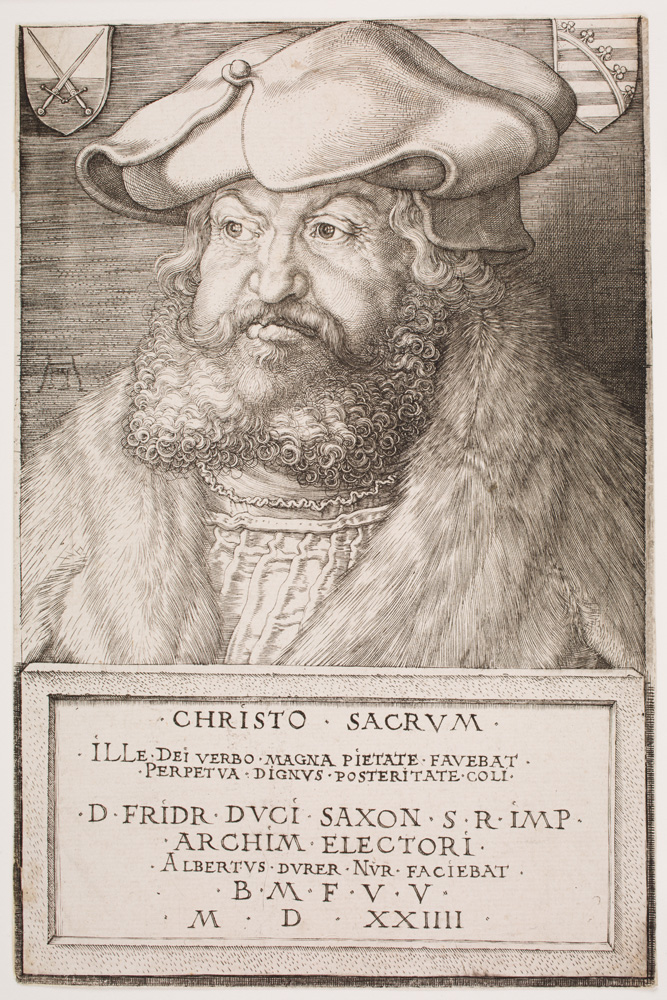
Albrecht Dürer, Frederick the Wise, Elector of Saxony, 1524, Engraving, Museum purchase, the Dorothy Johnson Towne (Class of 1923) Fund 2016.128
A powerful political figure and staunch Catholic, the Elector Frederick III of Saxony, known as “the Wise,” was one of the most important early defenders of Martin Luther, shielding him from the campaign by Emperor Charles V (r. 1519-1556) to eliminate him and prevent the dissemination of Protestant texts. In the first years of the sixteenth century, Frederick transformed Wittenberg by establishing a university that promoted humanist learning, and enhanced the church at Wittenberg castle with thousands of artworks. Although Dürer was not an official court painter, the artist produced many works for the Elector until Frederick’s death in 1525. In 1524, Dürer created this portrait to commemorate his patron, including a Latin inscription that states, “Dedicated to Christ. He loved the word of God with great piety, worthy to be revered by posterity.” The praise expressed here alludes to both Dürer’s and Frederick’s support for Luther and his reform ideals.
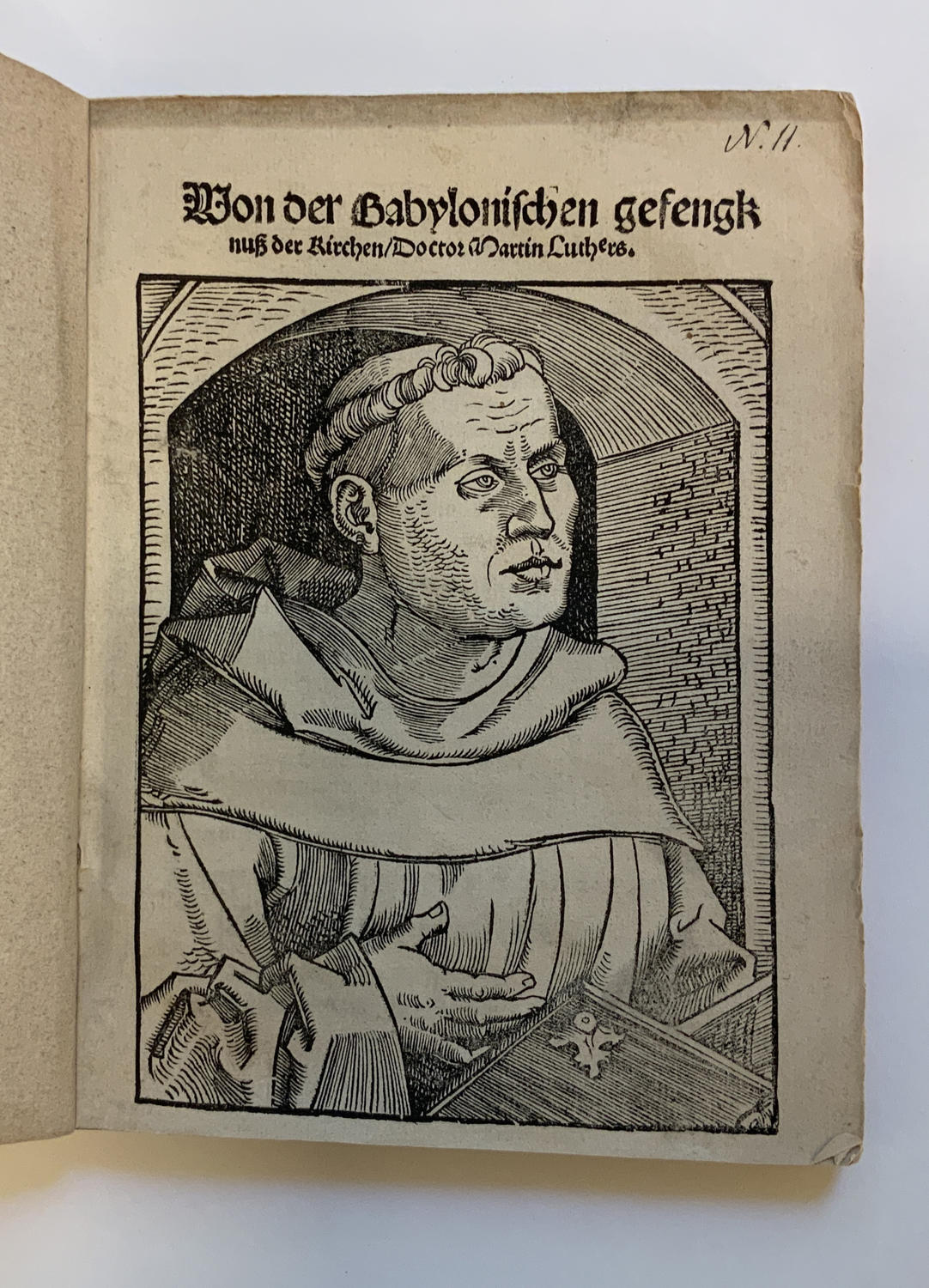
Martin Luther, Von der babylonischen Gefangenschaft der Kirche (On the Babylonian Captivity of the Church), 1520, Printed in Strassburg by Johann Schott, Margaret Clapp Library, Wellesley College Special Collections
Luther’s On the Babylonian Captivity of the Church was one of the three major treatises that he published in 1520. In it, Luther examined the seven sacraments of the Roman Church, and advocated for the validity of only Baptism and the Eucharist, thus launching a direct attack on the Church’s foundations. The small pamphlet format utilized here indicates that texts like these were intended for wide circulation.
The full-page author portrait, made after an engraving by Lucas Cranach, is the first portrait made to show the reformer’s features. It depicts Luther as a studious and kind-faced Augustinian monk, and is believed to have been commissioned by the Elector Frederick the Wise.
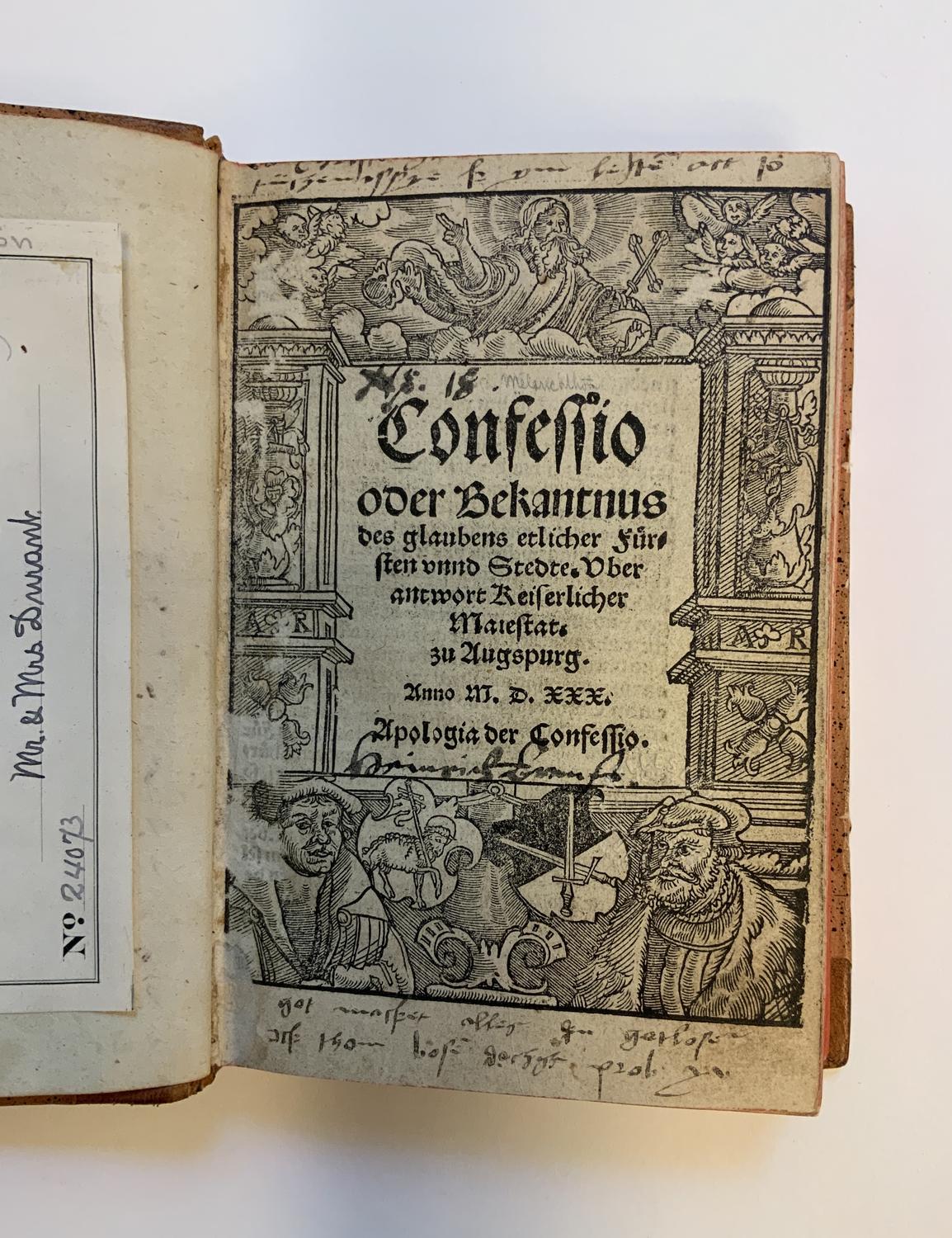
Confessio oder Bekantnus des Glaubens etlicher Fursten und Stedte (Augsburg Confession in German), 1532, Printed in Magdeburg by Hans Walther, Margaret Clapp Library, Wellesley College Special Collections
Composed largely by Philipp Melanchthon in collaboration with Martin Luther, the Augsburg Confession provides a blueprint for the organization and beliefs of a reformed Christian practice. The frontispiece includes a portrait of Luther on the left with a shield with a lamb (representing the Church). Luther is joined on the right by the Elector Frederick, represented with a shield with the crossed swords of Saxony, included here as a foundational patron of Lutheranism.